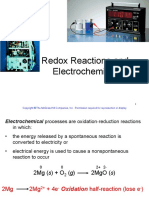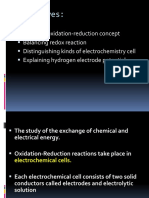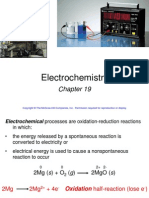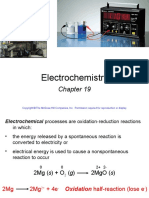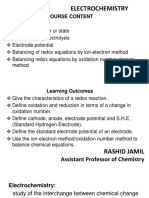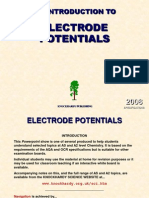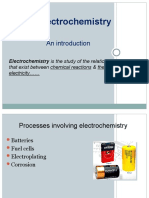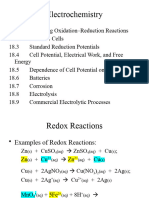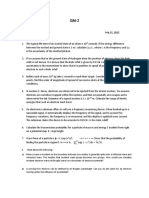0% found this document useful (0 votes)
14 views43 pagesChapter 17 Notes
Chapter 17 of Chem1112 covers electrochemistry, focusing on redox reactions, galvanic cells, standard reduction potentials, and applications such as batteries and corrosion prevention. Key concepts include balancing redox reactions, understanding oxidation and reduction, and calculating standard cell potentials. The chapter also discusses various types of batteries and fuel cells, highlighting their chemical processes and energy conversion mechanisms.
Uploaded by
nryh6wj46xCopyright
© © All Rights Reserved
We take content rights seriously. If you suspect this is your content, claim it here.
Available Formats
Download as PDF, TXT or read online on Scribd
0% found this document useful (0 votes)
14 views43 pagesChapter 17 Notes
Chapter 17 of Chem1112 covers electrochemistry, focusing on redox reactions, galvanic cells, standard reduction potentials, and applications such as batteries and corrosion prevention. Key concepts include balancing redox reactions, understanding oxidation and reduction, and calculating standard cell potentials. The chapter also discusses various types of batteries and fuel cells, highlighting their chemical processes and energy conversion mechanisms.
Uploaded by
nryh6wj46xCopyright
© © All Rights Reserved
We take content rights seriously. If you suspect this is your content, claim it here.
Available Formats
Download as PDF, TXT or read online on Scribd
/ 43










